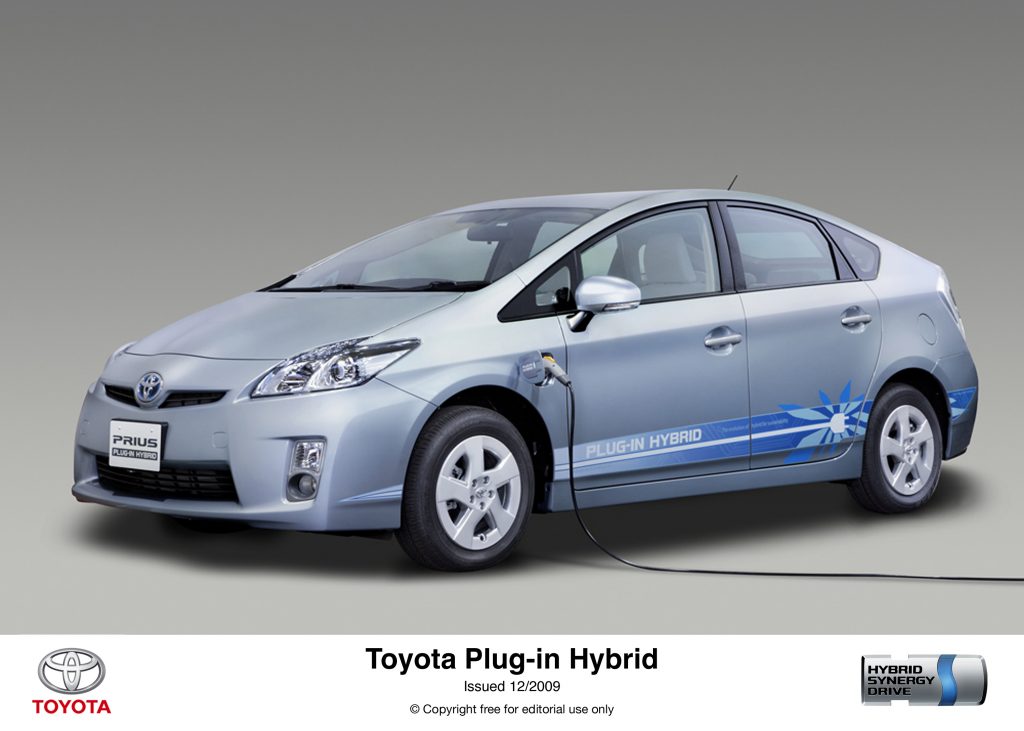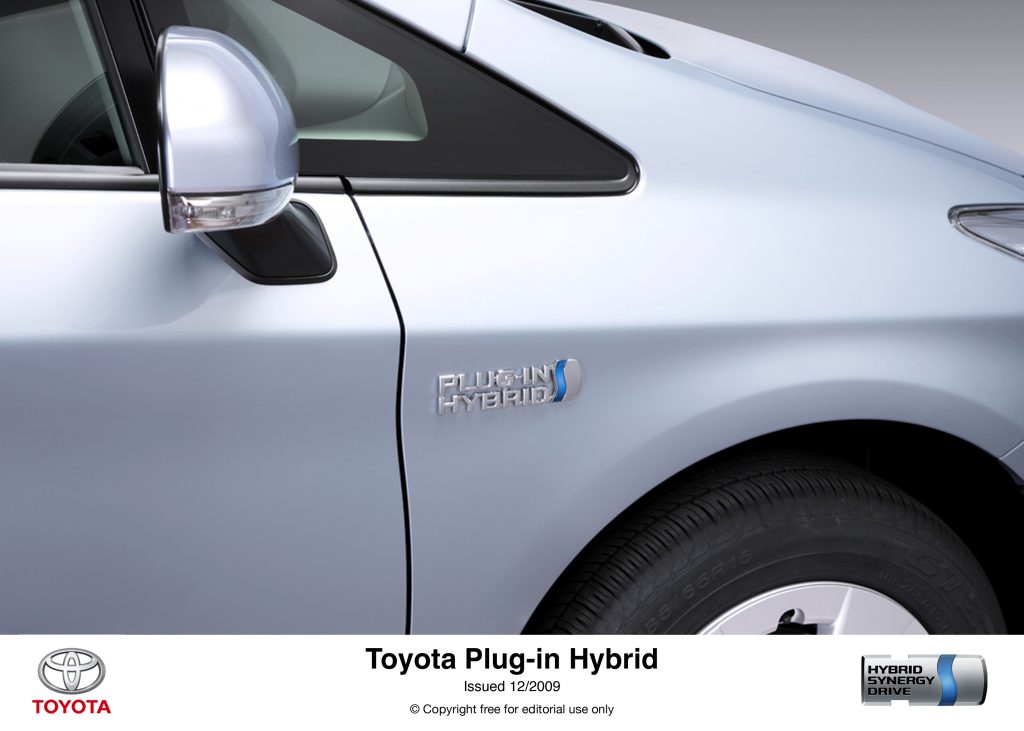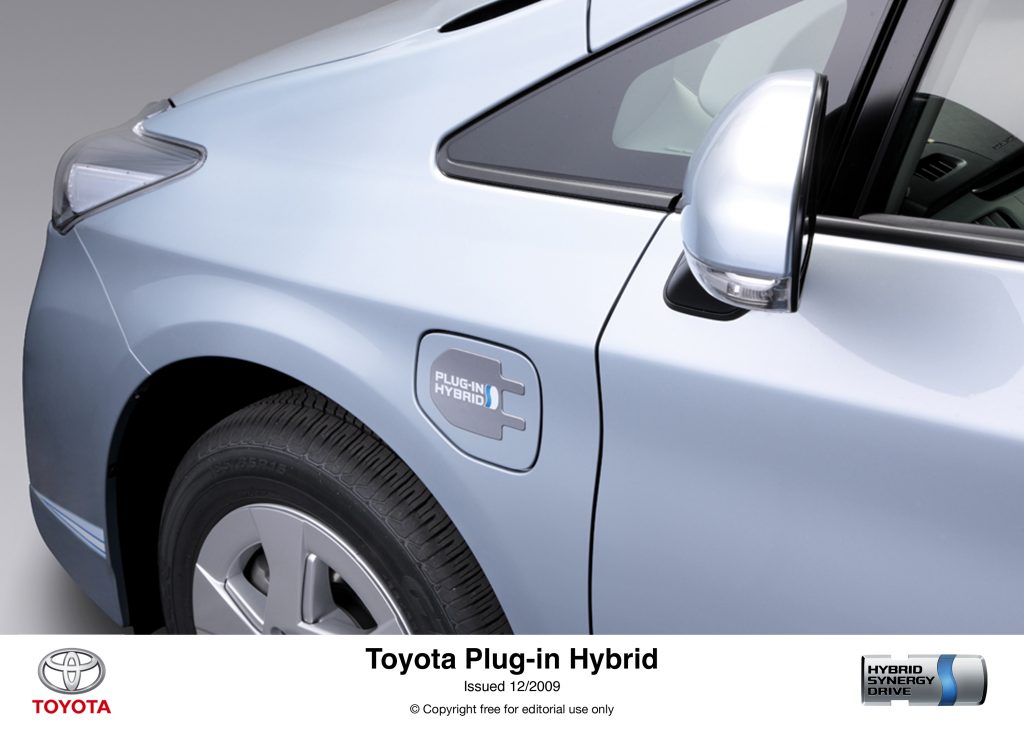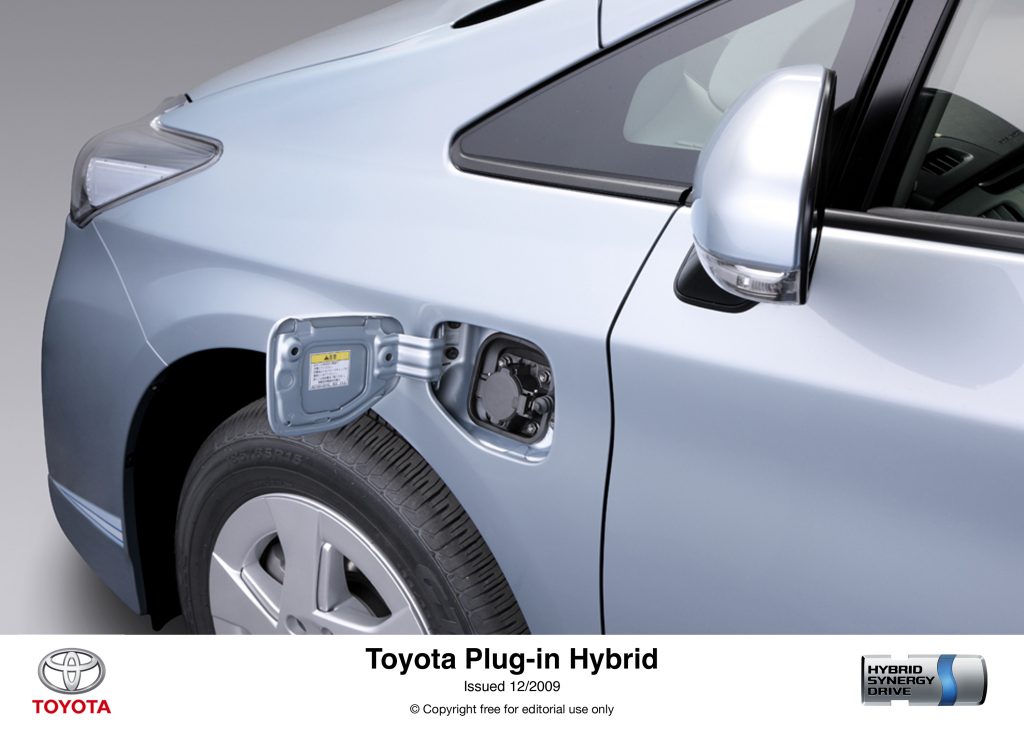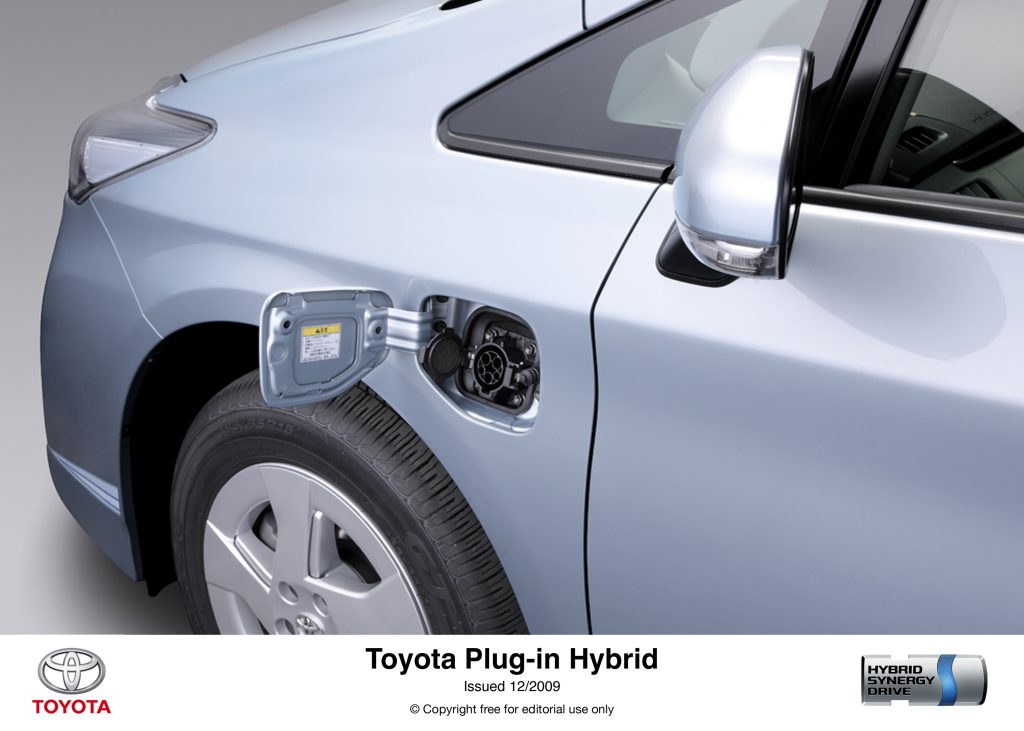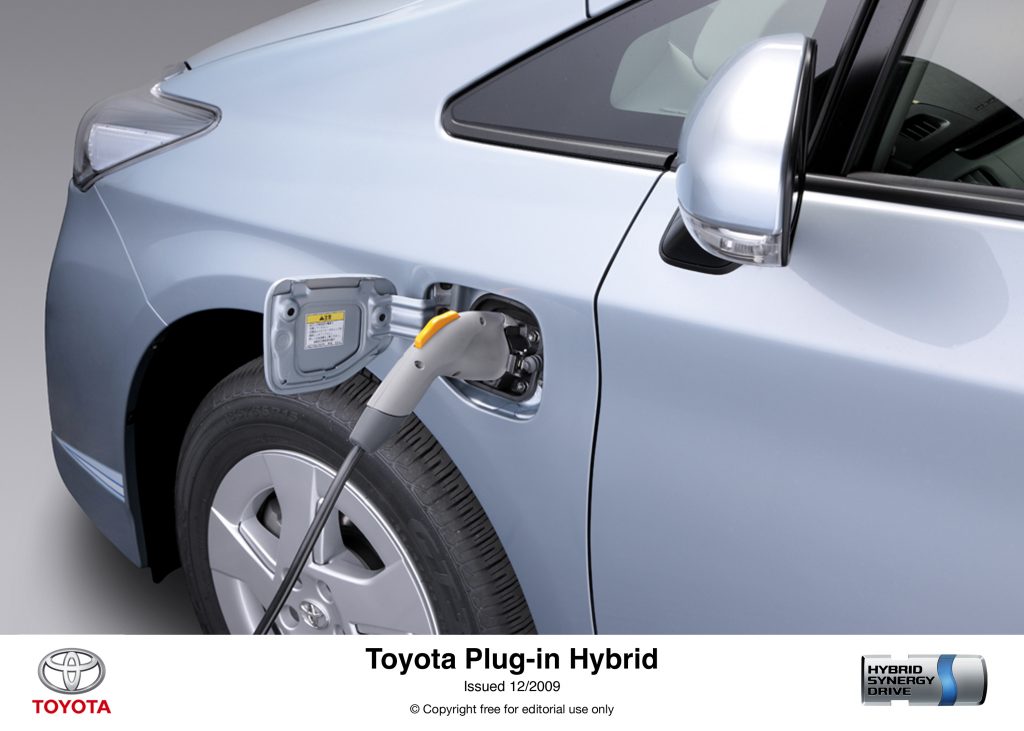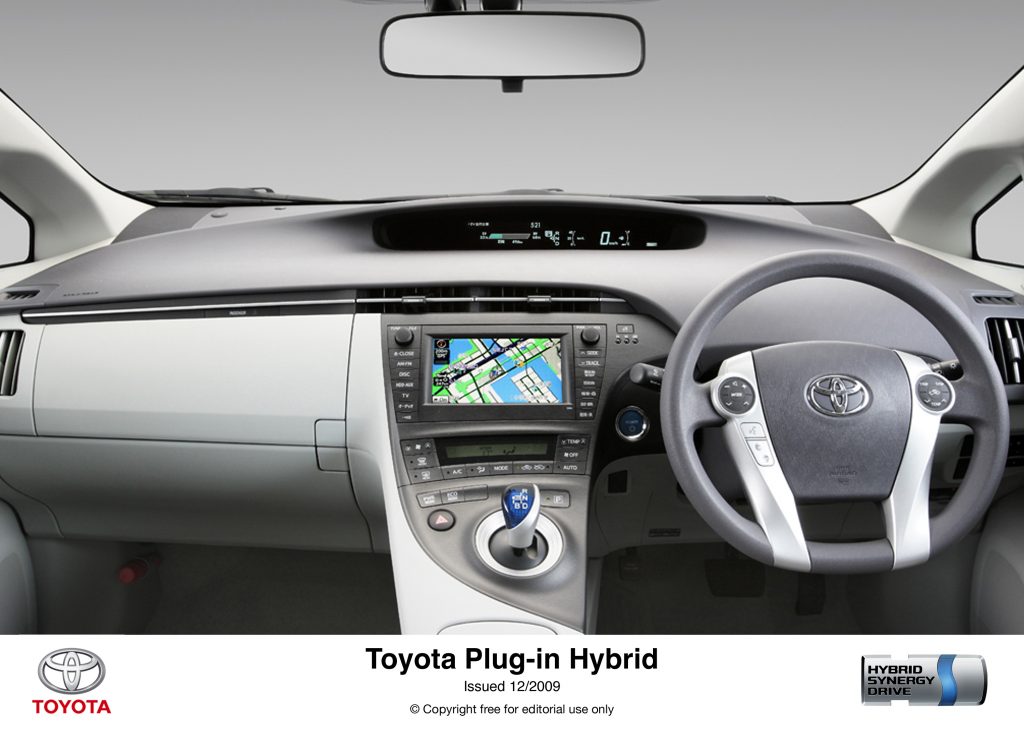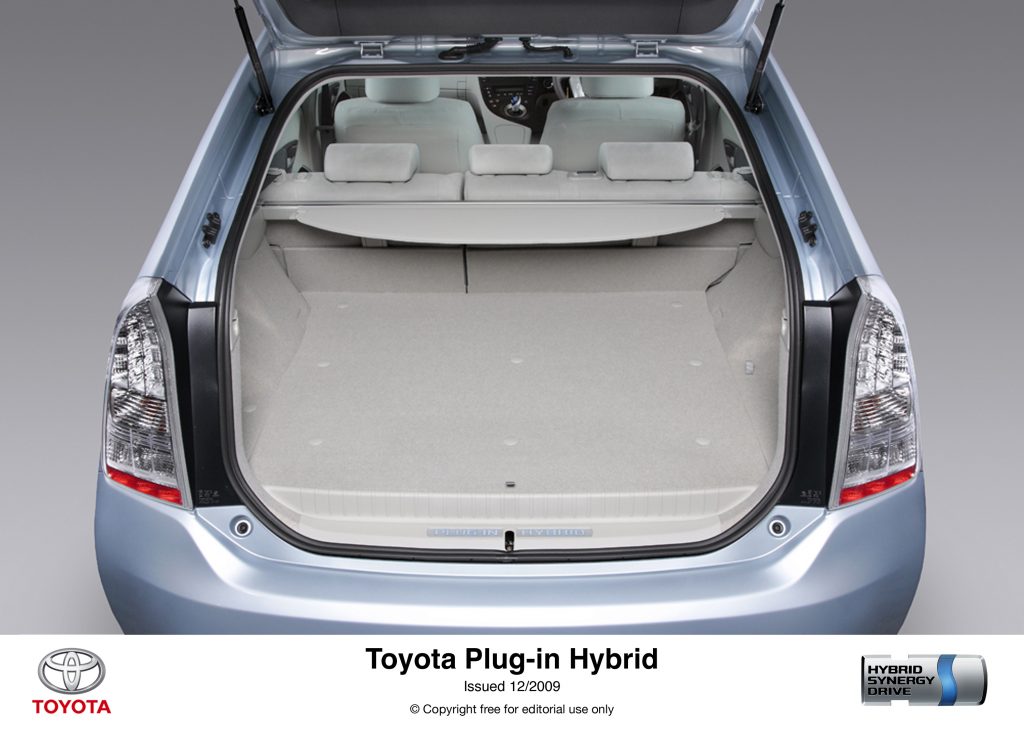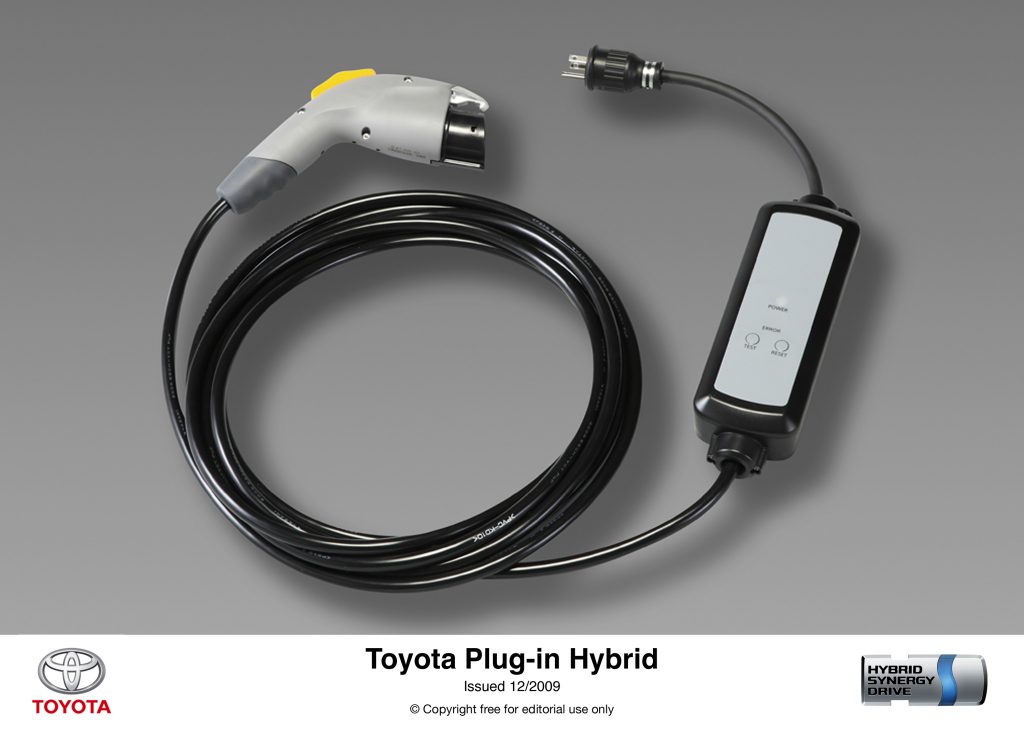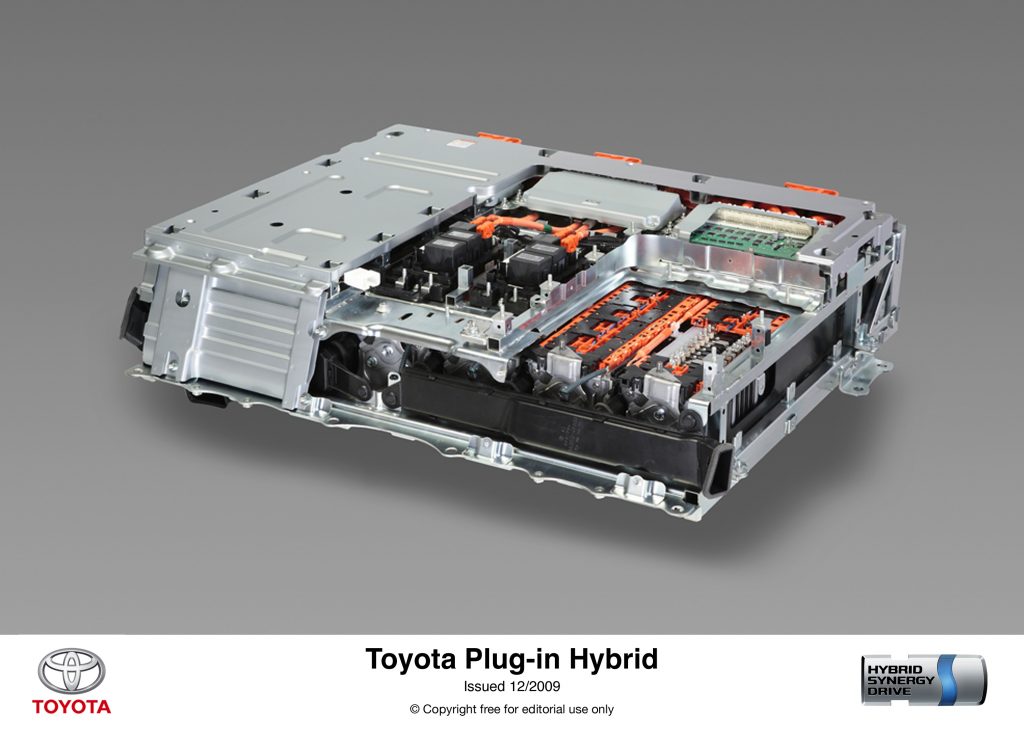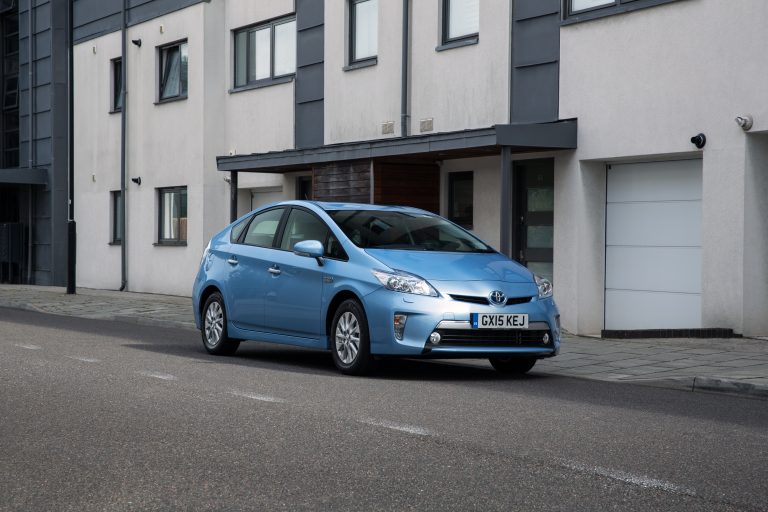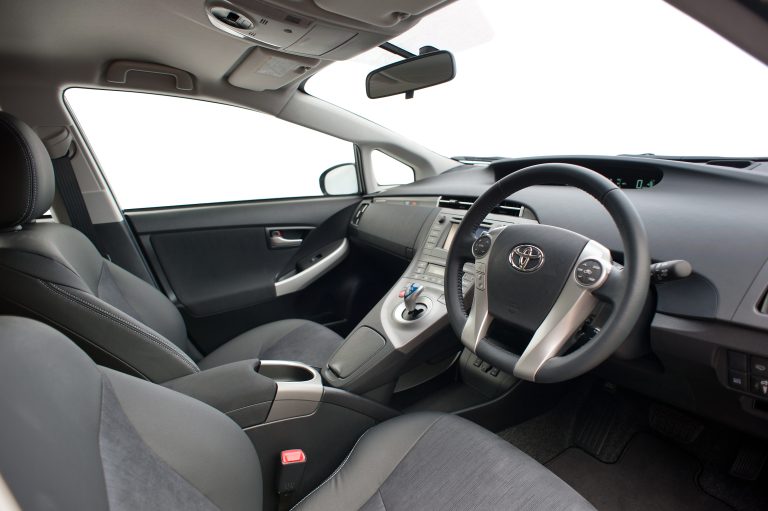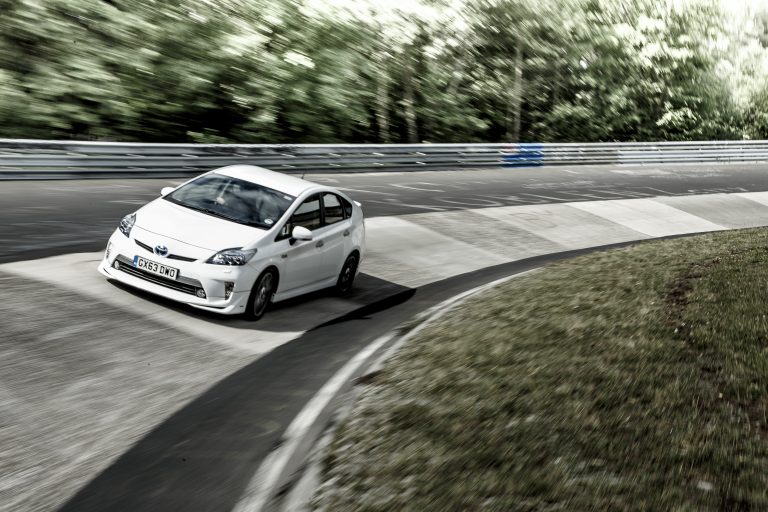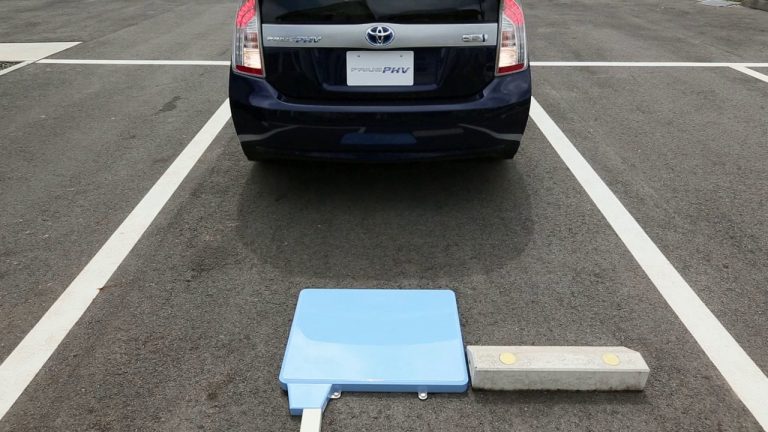Toyota Introduces Prius Plug-In Hybrid
Prius Plug-in Hybrid leasing programme commences
- First use of lithium-ion battery in a production Toyota vehicle
- Plug-in Hybrid for use as EV or extended range HV
- Only 59 g/km CO2
- 20 cars for UK trials in mid 2010
Toyota Motor Corporation in Japan has today confirmed the introduction of the Prius Plug-in Hybrid, a plug-in version of the third-generation Prius petrol-electric hybrid vehicle.
The Prius Plug-in Hybrid Vehicle (PHV) offers greater range on electric power only, significantly reducing fuel consumption and emissions. The PHV uses lithium-ion batteries – a first for Toyota – which can be charged from an external source as well as by the car’s own hybrid drive system.
Approximately 600 units will be introduced in Japan, the United States, and Europe over the first half of 2010. 20 will come to the UK in mid 2010.
The Prius PHVs will be leased to government ministries, local governments, corporations including electric power companies, universities and research agencies, for use in a demonstration programme aimed at collecting real-world driving data and spurring the development of battery-charging infrastructure.
In Europe, Toyota will lease approximately 200 units, 20 of which will come to the UK in mid-2010. The details of these UK leases will be the subject of a separate announcement closer to the time. The Prius Plug-in Hybrid will also be introduced in France and Portugal, with the company also considering 10 other European countries, including Germany and the Netherlands, along with countries in other regions, such as Canada, Australia and New Zealand.
The Prius PHV can be charged using an external power source such as a household electric outlet and is the first vehicle produced by Toyota to be propelled by a lithium-ion battery. Further, due to the battery’s expanded capacity, the vehicle has an extended electric-vehicle driving range, enabling use as an electric vehicle (EV) for short distances. While for medium and long distances, after battery power depletes to a level no longer allowing EV driving mode, the vehicle functions as a conventional petrol-electric hybrid vehicle (HV). Thus, use is not constrained by remaining battery power or availability of battery-charging infrastructure.
Furthermore, PHVs, such as the Prius Plug-in Hybrid, are expected to achieve fuel efficiency superior to conventional petrol-electric HVs, reduce consumption of fossil fuels and reduce CO2 emissions and atmospheric pollution. Verifications and rules that gauge the performance of a PHV (i.e. official fuel consumption tests) differ from region to region, but in Europe, the Prius PHV emits only 59g CO2 per km in the New European Driving Cycle*.
“The Plug-in Hybrid technology is a key driver on our road towards sustainable mobility,” said Toyota Motor Corporation (TMC) Executive Vice-President Takeshi Uchiyamada. “Based on Toyota’s full hybrid powertrain, PHV represents today the most practical way of increasing the use of electricity for personal transport. Now we need to investigate market acceptance of this new technology.”
Toyota believes that to meet the diversification of energy sources plug-in hybrid vehicles are a highly suitable environmentally considerate option. Toyota is therefore actively encouraging market introduction to aid understanding and to promote the early widespread use of PHVs. Toyota will analyse feedback regarding the Prius Plug-in Hybrid, with an aim to begin sales in the tens of thousands of units to the general public in two years.
Toyota promotes the use of alternative energy sources, such as electricity, to limit the consumption of fossil fuels and to reduce CO2 emissions. Thus, the company is accelerating the development of electricity-related technologies honed by experience gained from 12 years selling petrol-electric HVs, the market introduction of the RAV4 EV SUV and the leasing of fuel-cell HVs.
*(CO2 emissions of Prius Plug-in Hybrid are measured according to the new official international regulation for plug-in hybrid electric powertrains, as adopted by the United Nations Economic Commission for Europe).
| VEHICLE SPECIFICATIONS | |
| Engine displacement |
1,797 cc |
| Transmission |
Electric automatic |
| Powertrain |
Front-wheel drive |
| Length |
4,460 mm |
| Width |
1,745 mm |
| Height |
1,490 mm |
| Wheelbase |
2,700 mm |
| Track – Front
– Rear |
1,525 mm 1,520 mm |
| Weight |
1,490 kg |
| Seating capacity |
5 |
| Minimum turning radius |
5.2m |
| Tyre size |
185/65R15 |
| HYBRID SYSTEM SPECIFICATIONS | |
| System |
THS II Plug-in (with motor speed reduction device) |
| Engine |
1.8-litre gasoline 2ZR –FXE (high-expansion ratio) |
| Maximum output |
73 kW (99PS)/5,200rpm |
| Maximum torque |
142 N-m (14.5 kgf-m)/4,000rpm |
| Motor |
3JM (permanent magnet) |
| Maximum output |
60 kW (82 PS) |
| Maximum torque |
207N-m (21.1kgf-m) |
| Drive battery |
Lithium-ion |
| Capacity |
5.2 kWh |
| Rated voltage |
345.6 V |
| Charging time |
Approx. 180 minutes (AC100 V) Approx. 100 minutes (AC200 V) |
| System maximum output |
100 kW (136 PS) |
| System voltage |
Max. 650 V |
| EV mode maximum speed |
approx. 100 km/h (62mph) |
ENDS


